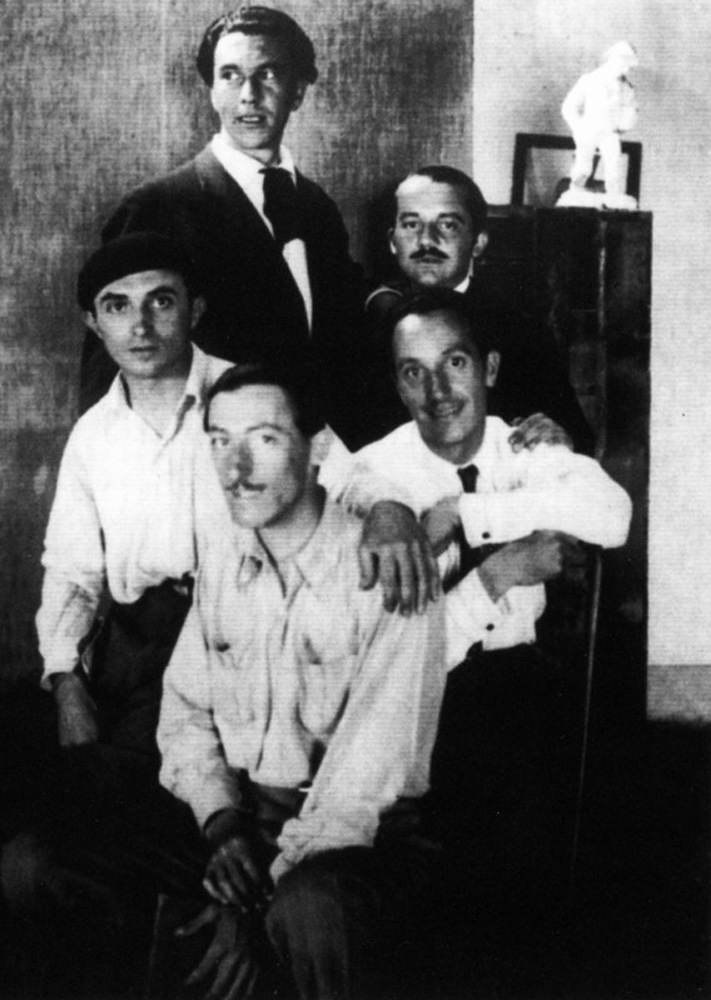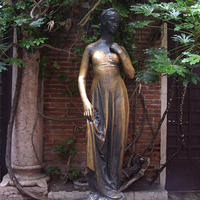More about Nereo Costantini
Works by Nereo Costantini

Contributor
As a writer, you don't often get the opportunity to study someone as humble as Nereo Costantini, the master Veronese sculptor.
Maybe this is because many artists aspire to be Pablo Picassos and Jeff Koonses, the biographies of whom shade and sometimes overtake the works, and who have throngs of rhapsodizing fans. Costantini is famous only in a limited circle of people who love Verona and Shakespeare's Romeo and Juliet, as Costantini's statue of the tragic teenage heroine in Verona, commissioned by the local Lions Club, has a subtle and enduring magic.
But, even in Italian, there is little writing about Costantini, partly due to his humble and rural origins, but mostly due to his reticent personality and shyness. Costantini's biographer calls the sculptor a "simple soul," adding, "Simplicity and naturalness constituted his visible temperament in accepting life, in understanding art. And it would be futile to hold the telescope and look for invisible secrets at other latitudes. Or perhaps we should look for him in his work." Costantini manages to compel the audience and critical establishment to look for his biography in the work itself, although this is a primary goal of most artists, even or especially those who make their lives themselves into artworks. In this sense, Costantini recalls the Cheshire Cat grin of his contemporary Andy Warhol, and Warhol's famous statement that everything you need to know about him lies in the surface of his artwork, and that "there's nothing behind it." And yet, there are tell-all biographies of Warhol, and none of Costantini.
Costantini's grandfather was a steward at an estate in Gazzo, and the artist was born in Nogara, which had been decimated by the plague a few centuries earlier. Costantini became a sculptor when day labor was the primary means of employment for people in Nogara, before the mass exodus from the area due to the closure of the large family estates, like the place where his grandfather worked.
Devastated by the passing, at the age of sixteen, of his older brother Corrado, also an artist, who had obtained admission to the prestigious Accademia di Belle Arti Gian Bettino Cignaroli di Verona, Costantini's life-work is inspired by his love and admiration for Corrado, an extended effort to transform the loss into a blessing.
Sources
- Altichieri, Gilberto. Mostra commemorativa di Nereo Costantini. Verona: Lions Club Verona, 1972.
- Bigliazzi, Silvia, and Lisanna Calvi. Shakespeare, Romeo and Juliet, and Civic Life: The Boundaries of Civic Space. New York: Routledge, 2015.
- Flatley, Jonathan. Like Andy Warhol. Chicago: University of Chicago Press, 2017.
- Jung, Reinhard. ΧΡΟΝΟΛΟΓΙΑ COMPARATA: Vergleichende Chronologie von Südgriechenland und Süditalien von ca. 1700/1600 bis 1000 v. u. Z. Wien: Verlag der österreichischen Akademie der Wissenschaften, 2006.












Altra opera di Nereo Costantini: Statua di Santa Rita da Cascia nella chiesa di Santa Maria Antica a Verona (1949)